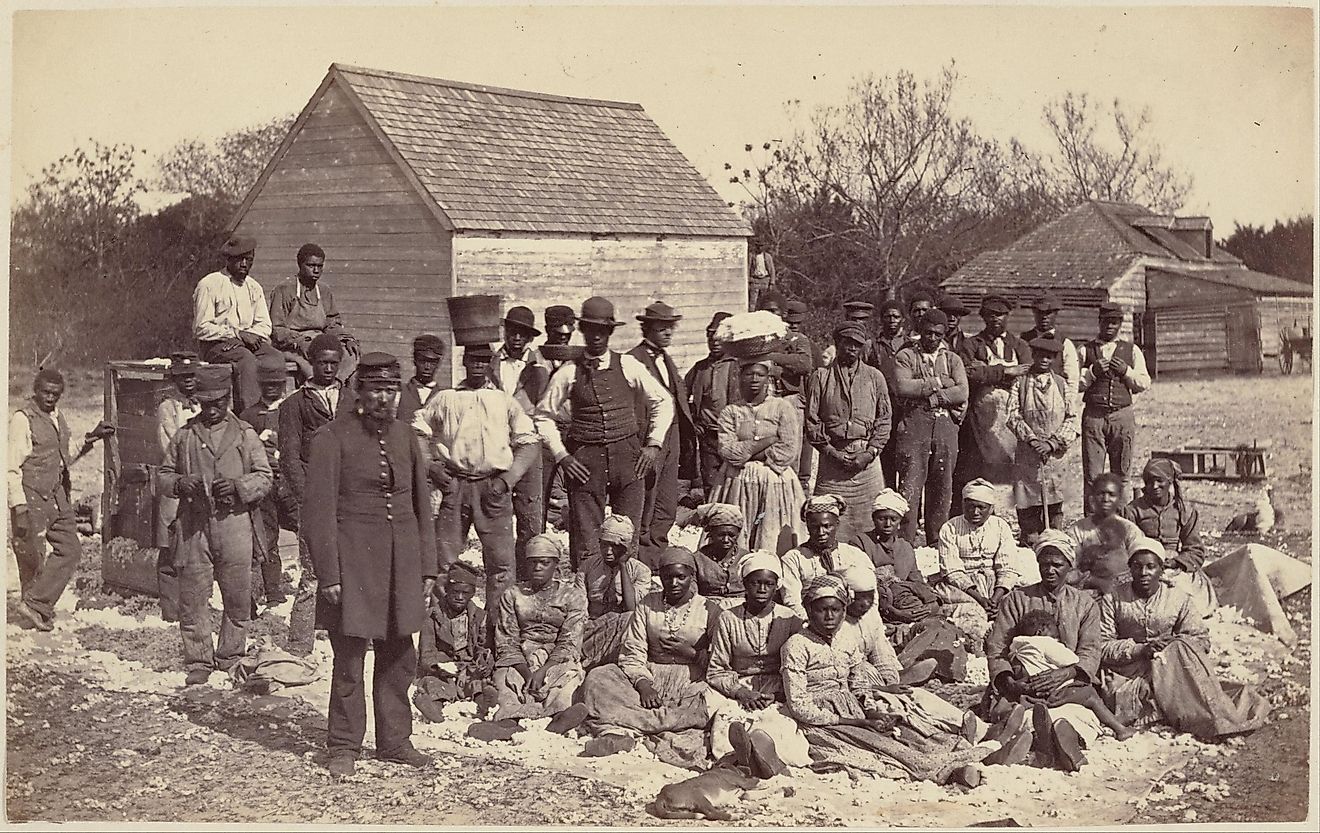Ancestral Homelands Of Slaves In The United States

The US Slave Trade
The history of slavery in the US is long and complex. Participation in the African slave trade and use of African slaves provided the building block from which the economy was built. Many industries and investors profited from their free labor. The legacy of slavery persists in the social landscape of the country to this day.
Slavery began in the US during the 17th century when European settlers were looking for cheaper labor to work in the tobacco, cotton, and rice fields. A Dutch ship brought the first African slaves to Jamestown, Virginia in 1619 and for the next 200 years, sailors brought hundreds of thousands of slaves across the Atlantic Ocean from Africa. Warring tribes in Africa would often capture their enemies and exchange them at European trading posts for guns, alcohol, and other manufactured goods. This system created what is now referred to as triangular trade with Europeans sailing to Africa to trade goods for people and then taking the people to trade for crops and then finally, taking those crops back to Europe.
Biggest Slave Markets
So where did slave traders find the majority of the slaves who were taken to the US? The ships stopped along the western coast of Africa to do trading. So many people were taken from here and sold into slavery in fact, that it is referred to as the Slave Coast. One-quarter of all slaves taken to the US came from Angola and the Democratic Republic of Congo. These individuals belonged to the Kongo and Mbundu tribes and were largely traded to the Portuguese.
The next biggest group of individuals forced into slavery were the Bamileke, Bubi, Ibibio, Igbo, and Tikar tribes. Together, they made up 22% of all American slaves and were originally from present-day Cameroon, Nigeria, and Equatorial Guinea. Many of the slaves from here had been domestic slaves in Africa. When the people of these countries, particularly Nigeria, learned of the great demand for slaves, they went off to start wars with neighboring towns and tribes to increase the number of captives who could be traded for manufactured goods.
Other significant ethnic groups that made up the majority of American slaves include the: Mende and Temne from Guinea, Liberia, and Sierra Leone (15%); Fula, Mandinka, and Wolof from Gambia, Mauritania, and Senegal (14%); and Akan and Fon from Benin, Ghana, and Ivory Coast (13%).
Other tribal members were also traded into slavery in smaller proportions. These groups include the: Kru and Mande from Ivory Coast, Liberia, and Sierra Leone (5%); Allada, Ewe, Mahi, Yoruba (4%); and Makua and Malagasy from Madagascar, Zimbabwe, and Tanzania (2%).
Cultural Influence
All of these varying cultures brought with them their beliefs and traditions which were later blended and adopted in their new foreign land. Music, song, dance and food have all been influenced by the African slave legacy. Hand clapping and tapping feet took the place of drums when those were prohibited (slave owners learned that they could be used to communicate) and new instruments later joined the scene after their invention by African slaves: the fiddle, the banjo, and the bells. Reading and writing were also prohibited among slaves, and so they turned to oral traditions that have given the American culture many famous folk tales. They also influenced what is today known as gospel, jazz, and blues music. Southern food with its beans, greens, cornbread, and fried chicken wouldn’t be what it is today without the food traditions of African slaves.
Freedom
After years of fighting, bloodshed, and lost lives, the Emancipation Proclamation was signed by President Abraham Lincoln on January 1, 1863. The proclamation pronounced all slaves in the south as “free men”. But, it was not until June of 1865 that the Union Army had control of the southern states and could free the slaves still being held in captivity.
Where Did Slaves In The United States Originate From?
| Ethnic Groups | Origins (Modern Countries) | Percent of American Slaves |
| Kongo and Mbundu | Angola, DR Congo, Republic of the Congo | 25% |
| Bamileke, Bubi, Ibibio, Igbo, and Tikar | Equatorial Guinea, Cameroon, and Nigeria | 22% |
| Mende and Temne | Guinea, Liberia, and Sierra Leone | 15% |
| Fula, Mandinka, and Wolof | Gambia, Mauritania, and Senegal | 14% |
| Akan and Fon | Benin, Ghana, and Ivory Coast | 13% |
| Kru and Mande | Ivory Coast, Liberia, and Sierra Leone | 5% |
| Allada, Ewe, Mahi, and Yoruba | Benin, Ghana, Nigeria, and Togo | 4% |
| Makua and Malagasy | Madagascar, Mozambique, and Tanzania | 2% |











